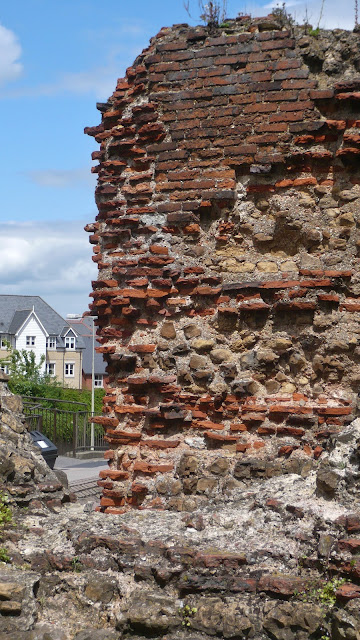.
Recently I have been indulging my liking of history by reading both Suetonius and Tacitus. Roman history was something I knew about without having studied properly. So I thought have a read of these two books, which someone else paid for, and I am now more aware of the first twelve emperors from Augustus onwards. At least I now have some idea of the authors opinions of these men and their doings, and as always there is a bias to dig through.
Suetonius was one of the high ranking members of Roman society. While Hadrian was Emperor he attained the height of being Secretary of the Imperial Correspondence. Unfortunately in the year 122 Hadrian got the impression Suetonius was being 'over familiar' with Sabina, the Empress, while Hadrian was in Britain, and so dismissed him. Having been Director of the Imperial Libraries we was well able to find his way around the records of past deeds, accurate and mythologised, and from these and other sources he produced his 'Lives of the Twelve Caesars.'
I really enjoyed this book! Whether it was the vast quantities of cash available to the Emperor, the freedom to invade any nation desired, the ability to make instant decisions with no comeback, and removal of those who upset the rulers will by throwing them to the lions I don't know, but I enjoyed this book! Having all power, not counting the women bitching around you and the fawning courtiers making themselves useful and rich, can be a useful trick. However amongst those willing to flatter you rises a desire to put an end to you also. Reading a list of Roman Emperors from the first three hundred years it is the minority who die in their beds, the vast majority were assassinated I suspect that the real reason I liked this book was the glimpse into the lives of those who ran Rome. A basic insight certainly, not a history similar to those produced today, but insights into the everyday are seen, and they are not always pleasant for the man in charge.
Both books start with Augustus and end with Domitian, at least they would had much of Tacitus manuscript not been lost. Sadly his book ends just before Nero gets his comeuppance. We are treated to all the worst, and much of the best, of these rulers. The squabbles between them and their women are shown, although the women ought not to be in powerful positions of course. Tacitus especially indicates how disgraceful it is that a mere woman should attempt to run the Empire! Both men, may well have known one another. Tacitus was a friend of Pliny, Pliny a patron of Suetonius and it is likely one influenced the other as they both came from high class backgrounds. Both wished to indicate how much better life was under their leaders by showing how bad things were in the past. Thus debauchery is often mentioned, much detail by Suetonius, less so by Tacitus. Claudius liked to stay at a distance from Rome and enjoy his sexual pleasures it appears. At times the tales sound like the 'News of the World,' not history.
One or two major points arise from these books about Rome. One is the deep belief Romans had in their gods. Each day a victim, usually a bird, was killed and the liver examined for indications of how things would be for the Emperor that day. Personally I think killing that bird for that is offal. Rome depended on their gods, Suetonius in particular begins each ruler with a long description of the omens and signs that occurred on the day he was born. Eagles are seen perched on the houses, an earthquake would occur, lightning would strike a major building and so on. There must have been vast numbers of eagles and a dangerous amount of lightening in that part of the world in those days! It also explains why they did not understand the Jews who refused to burn incense to any emperor and did not accept their gods. This was made worse when Christians arrived and the belief was they were cannibals.Did they not eat the body and blood of their God? Both were considered superstitions by those who sought the oracles!
The other major thought was just how viscous a society reigned in Rome. Pax Romanus may well has allowed trade to continue but any crime (and no matter what class you were you could end up as a criminal) could take you to death, and that on a cross or in front of beasts in the arena! Gladiatorial contests were often to the death, and Claudius we read, enjoyed watching the loser die. Criminals could be scourged to death, and Roman citizens lost their heads publicly, an advantage of being a citizen! How thoughtful! People squabbled over seating arrangements, as the better classes wished to have the front seats to show their importance. Emperors and Senate discussed this often as self important men fought for position. Cruelty was part of their make up and if the situation required it an attack on a fellow senator was used to have an enemy banished or forced to commit suicide. A great many ended this way as lies and deceit filled the rulers household. Rewards for those who informed were often great, although later their sin would find them out. A cruel society, quite happy to slaughter a whole town if they opposed Rome, and if feeling merciful the men would die and women and children sold into slavery! Touching really.
Both books aid us to understand Roman attitudes, but it is important to also read the younger Pliny as he gives a senators view of life in Rome and incidentally tells us more of everyday life than these books reveal.
.




.jpg)


































